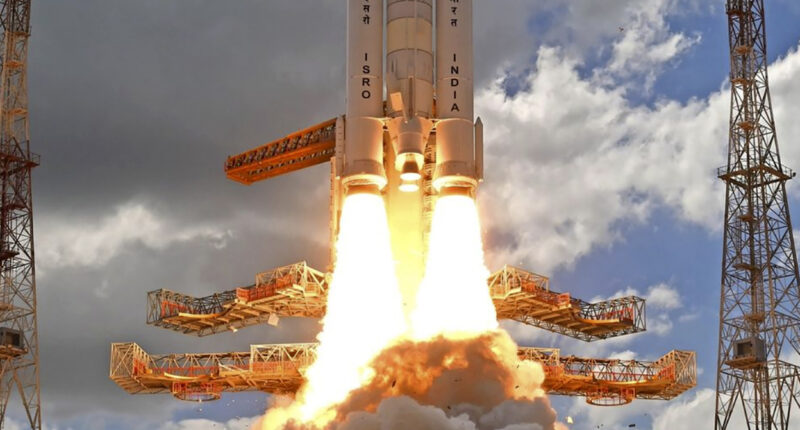INDIA launched a spectacular mission to land a lunar rover on the far side of the moon today.
The £57 million Chandrayaan-3 rocket blasted off from a launch pad in Sriharikota in southern India sparking cheers and applause from mission controllers.
Huge crowds cheered and waved the national flag as they watched the rocket roar into the sky.
Space agency director Sreedhara Panicker Somanath announced: “Congratulations India. Chandrayaan-3 has started its journey towards the moon.”
It is the second time an unmanned moon landing has been attempted by India – the world’s fastest developing nation with a £2 trillion economy.
A previous attempt crash landed into the lunar surface in 2019 – but success now would make India the fourth nation to reach the lunar surface after the US, Russia and China.


The Chandrayaan – or “Moon Vehicle” is carrying a lander and a rover and is due to touch down closer to the lunar south pole than any previous mission on August 23 or 24.
America’s NASA last sent a manned mission in 1972 but is planning to build a moon-orbiting space station as a gateway for humans to reach the surface.
Despite its relatively modest budget of £1.3 billion – about a tenth of Nasa’s – the Indian space programme has boomed and put a satellite into orbit around Mars in 2014.
But India’s space ambitions have sparked criticism in the UK – which has handed the powerful but poverty-stricken Asian nation £2.3 billion in taxpayer-funded aid since 2016.
Most read in Tech
Experts believe the southern polar region may be the best site for a future manned base – possibly in the 13 miles-wide Shackleton Crater.
The Indian rocket is ferrying a lander – called “Vikram”, or “Valour” – equipped with instruments that will sense moonquakes around the landing site.
Its wheeled lunar rover – called “Pragyan” or “Wisdom” – will carry out experiments zapping moon rocks with a laser and analysing gases released.
Anil Bhardwaj, director of India’s Physical Research Laboratory, said: “We are not going to the moon simply to show we can.
“We are doing it to help the world, know about important elements and minerals, and, maybe one day, even set up a second home for humanity.”
This post first appeared on Thesun.co.uk












